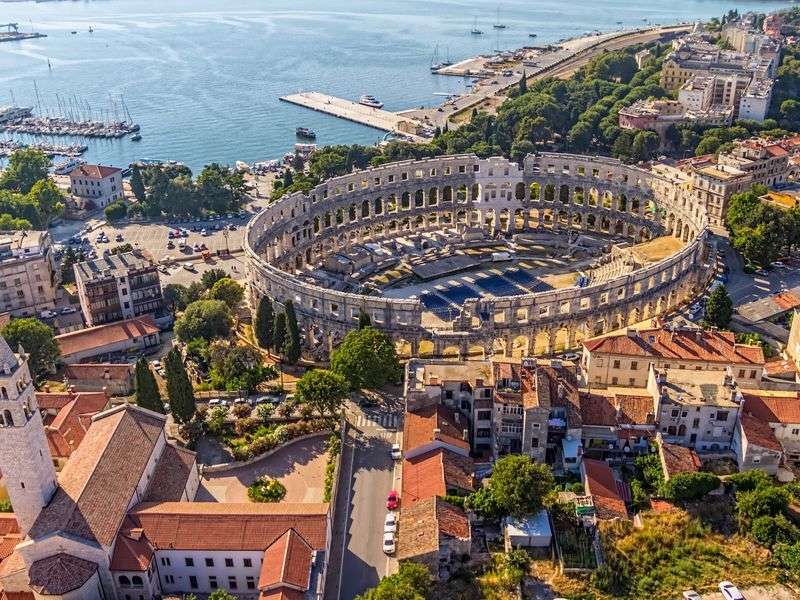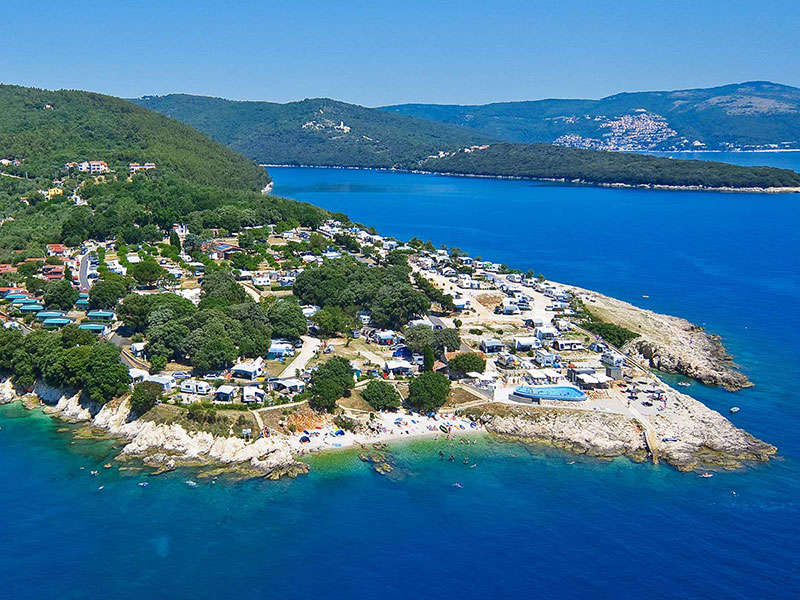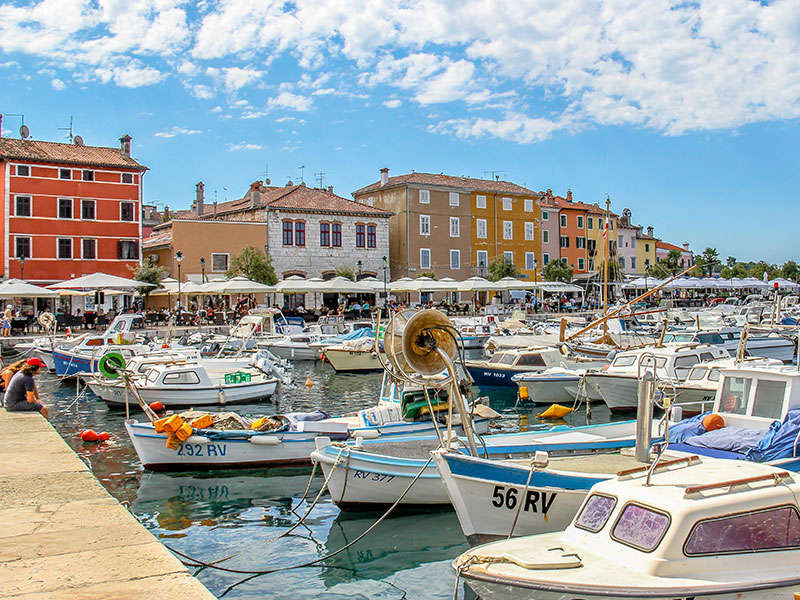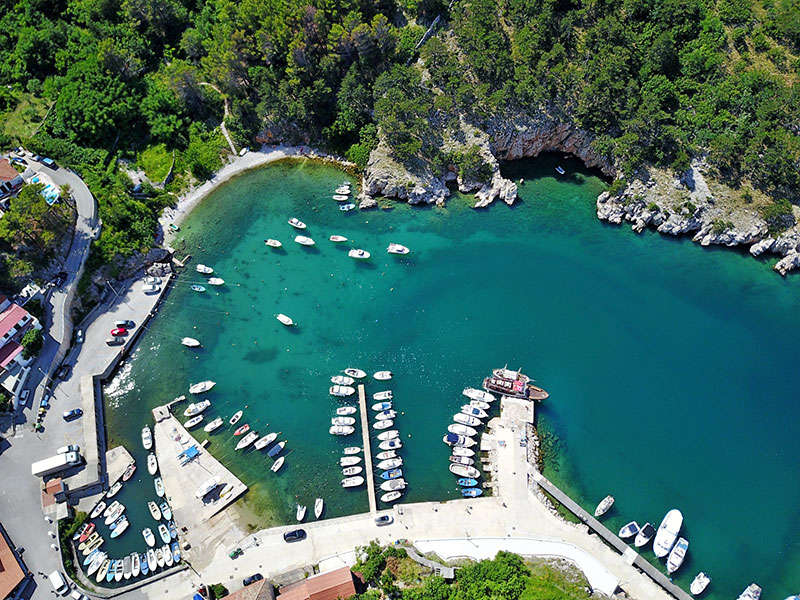Istria is located on the northern Croatian shores between the Kvarner Bay and Triest. The borderline shared by Croatia and Slovenia can be found on the peninsula. It is often called “Blue Istria” due to the fact that the whole region has crystal clear, blue waters. The charm of the Istrian peninsula is provided by the bays surrounded by rocks and cliffs, the pebbly beaches and the medieval ports located on the 430 kilometre-long shores. 
The article gives you an overview of the following topics:
- What to do in Istria: the Istrian peninsula in general
- Things to do In Istria: Cities and ports along the shores of Istria
- What to do in Istria? The nature awaits
What to do in Istria: The Istrian peninsula in general
The Adriatic shores are famous and popular among the sailing community worldwide, thanks to the well-equipped marinas that can be found everywhere; plenty bays and natural formations.
Istria climate
Istria is amongst the most beautiful and interesting places to discover in Croatia. It has a more pleasant, moderate Mediterranean climate than southern regions.
There are areas with green forests and beaches here. The average temperature in the summer rises up to 23–28 °C, which warms the seawater to a nice 24 °C. The peninsula can be divided into two parts: inner Istria and the region on the seaside. The main sailing season lasts from July to August, but visitors of the peninsula can enjoy the several opportunities of the beautiful coastline from spring – the beginning of the Easter period – to October. Thanks to the pleasant winds that are constantly present from spring to autumn, the weather necessary for sailing is a guarantee during the daytime. Check the sailing conditions and wind rose diagram of Istria
The terrain and cities of Istria
Should you approach Istria in any direction, you will see wonderful mountain ranges soaring into the sky. The most popular towns are Umag, Porec, Rovinj and Pula, located on the seaside of Brijuni National Park. Kvarner Bay, on the eastern side, is also very popular; its main islands are Krk, Rab and Pag. The region is well-known for its unique natural treasures and cosy fishing towns as well as its gastronomy. Istria is famous for its fantastic wines, its truffle, the special seafood and the locally produced olives that have a unique taste.
Istria beaches
We can find amazing beaches in the Istrian peninsula. The northernmost one, which is near Umag, is the sandy beach of Zambratija, located in a small bay. Bijica is in the southern part of Istria not far from Pula; it has one of the most beautiful sandy beaches in Croatia. 
Things to do in Istria: Cities and ports along the shores of Istria
Umag
Leaving from the northern part of the peninsula, from the direction of the Slovenian border, the first town we encounter is Umag. The city of Umag offers us countless sights to visit and recreational opportunities, both to those looking for entertainment and those who would prefer exploring the historic part of the city. The old city is enchanting. We can find many smaller squares and narrow alleys, as well as Gothic and Renaissance buildings. The remains of the old castle wall can be seen in many places. Another interesting sight of the old city is the towers located in the southern and western ends. There is a marina for yachts with 475 moorings, with a length of 40 metres and a depth of 4 metres.
Porec
The next destination is the beautiful Porec, located about 24 kilometres from here. It is a picturesque town on the beach, most famous for its old fishing port. Once we are here, we should visit the old city of Porec, which can be found on a tiny peninsula. The city has several marinas. Read about what to do in Porec.
Rovinj
Going further west, after leaving Vrsar we should spend a night in one of the most beautiful Adriatic towns, Rovinj. Rovinj is an authentic, old-fashioned romantic town with narrow streets and marvellous tiny squares. We can admire many crooked alleys, small squares and old houses in the old city. The architecture of Rovinj has many houses and small buildings with a Venetian style. Read about what to do in Rovinj.
Vrsar
Vrsar can be found between Rovinj and Porec, and it is a special little town. The old city was formed inside this town in a special way, on a special spot. It was established on top of a hill, and later on, it started to expand downwards, in the direction if the port. Directly opposite the city of Vrsar, there are further 18 tiny islands that are wonderful places to visit by boat.
Pula
The next port city is Pula, the mecca of sailors. We can find monuments from the Roman and Venetian times, such as the Forum or the Fort. The most famous sight is the giant amphitheatre. During the summer, they organise dozens of concerts, theatre productions and film festivals here. Read about what to do in Pula.
What to do in Istria? Nature awaits
Brijuni National Park
The Brijuni National Park, which is the only nature reserve on the Istrian peninsula, can be found near the shores of Pula. The archipelago consists of 14 smaller and larger islands; the two largest ones, Veli Brijun and Mali can be found on Brijun. The Brioni archipelago has 3 larger and 12 smaller islands. The National Park has a beautiful Mediterranean fauna and a safari park with several exotic animals. We can also find many archaeological sites from the Roman and Byzantine period, offering a perfect recreational opportunity for those who are looking for historic sights.
Krk Island
The largest and most populous island of Croatia. It provides countless swimming opportunities with its nearly 2000-kilometre-long shore segment. The island is mostly surrounded by small pebbly – and a few sandy – beaches, and hidden bays with crystal clear water that are hard to access. There are many small islands in the close proximity of Krk, such as Rab which has sandy shores. The island is a great choice if we would like to go on a hike or do watersports. There is a town called Baska here; it has an old city with a wonderful old city filled with nostalgic narrow streets. It is worth visiting the hidden Golden Beach, only accessible from Baska by boat.
Spectacular beaches, ancient fishing towns, Medieval and Renaissance architectural sights and beaches with unspoiled beauty; sailing comes with a historic time travel on these shores! Istria is the perfect spot for a family holiday, recreation and sports. Read more if you plan sailing in Istria or boat rental in Istria.
